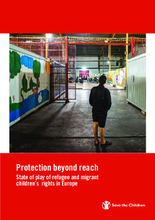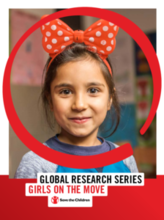Displaying 181 - 190 of 836
This study examines a sample of 1705 cases of unaccompanied and separated children (UASCs) included in a pilot project for early recovery child protection intervention.
The primary objective of this study is to test the effects of family, school and background characteristics on left-behind children’s (LBC) and non-left-behind children’s (NLBC) physical health, school performance, and delinquent behavior.
This case study explores the arriving process of an unaccompanied minor refugee in Germany and his perception of the psychosocial support he received.
This study’s objective was (1) to investigate if having parent(s) born outside of Europe has an additional effect on the risk of entry into out-of-home care (OHC) in cases of alleged parental physical violence against children, and (2) to discuss potential empirical support for the risk model and the bias model for explaining the over-representation.
With this report, Save the Children aims to assess how children have been affected since the beginning of the so-called ‘refugee crisis’.
The Girls on the Move Initiative is a global series of action research that puts girls at the centre. It has been conducted across different regions within existing Save the Children programmes. Each regional study generates targeted evidence to address knowledge gaps in current literature and programme approaches, and engages Save the Children teams to immediately strengthen ongoing interventions for girls in different stages of migration, notably during transit and arrival.
The purpose of this study is to examine the association between parental migration and adolescents’ styles of close relationships with parents, friends and romantic partners.
For this study, the authors conducted the first nationwide survey to examine whether left-behind children aged 0–6 years old have poor interactions with primary caregivers, and whether school-age children experience higher levels of victimization and emotional distress than their non-left-behind counterparts.
This study aimed to systematically review experimental studies of interventions that promote mental health wellbeing of left-behind children (LBC) in mainland China.
The current study aimed to clarify the relationship between stressful life events and delinquency among left-behind adolescents by examining the moderating roles of resilience and separation duration in this process.


